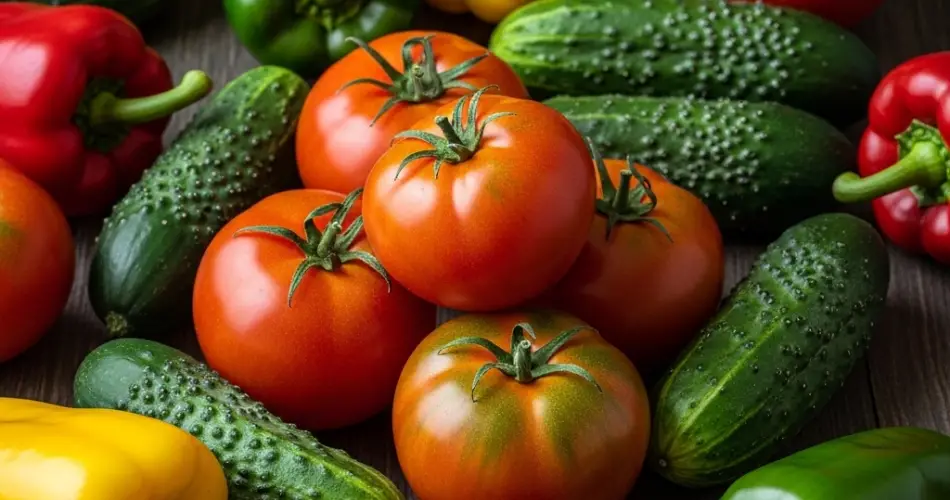When starting vegetables like tomatoes, peppers, or cucumbers from seed, one of the most common issues gardeners face is seedling stretch, also known as “legginess.” It happens when plants grow tall and thin, with weak stems, often due to insufficient light or unbalanced nutrition. At the same time, poor root development can result in stunted growth, increased vulnerability to disease, and low productivity later on.
Luckily, there’s a powerful natural remedy that targets both problems at once—encouraging robust root growth and preventing your seedlings from stretching. With just one simple feeding, you can help your young plants become compact, strong, and ready to thrive in the garden.
Why Leggy Seedlings Are a Problem
Leggy seedlings aren’t just an aesthetic issue. When plants stretch upward quickly without enough support, their stems become thin and weak. This makes them prone to falling over, especially during transplanting or windy conditions. Leggy plants also often have underdeveloped roots, which compromises their ability to absorb water and nutrients.
Without healthy roots and sturdy stems, plants take longer to recover after transplanting and may yield fewer fruits. Preventing this early on is key to a successful harvest.
A Natural Solution for Strong Roots and Compact Growth
There’s an easy and natural way to promote stronger roots and prevent seedlings from becoming leggy: a homemade root-stimulating feeding solution. It delivers key nutrients in a form that’s readily absorbed by young plants, giving them the strength they need to grow bushy, not tall and spindly.
This feeding is especially useful for tomatoes, peppers, and cucumbers—plants that are known for their vigorous growth but also prone to stretching under poor conditions.
Ingredients for the Root-Boosting Feed
To make this natural plant tonic, you’ll need:
-
1 teaspoon of dry baker’s yeast
-
1 tablespoon of sugar
-
1 liter of warm (not hot) water
Optional (but beneficial):
-
A few drops of aloe vera juice (supports root health)
-
A pinch of wood ash or crushed eggshells (for calcium and trace minerals)
Instructions:
-
Dissolve yeast and sugar in the warm water. Stir well.
-
Let the solution sit for 2–3 hours at room temperature. During this time, the yeast will activate and begin fermentation, producing beneficial byproducts.
-
Before using, dilute the mixture at a ratio of 1:5 with clean water. This ensures the solution is gentle on seedlings.
How to Apply
-
Apply the diluted solution directly to the base of the seedlings. Use about 100–200 ml per plant depending on the size.
-
Apply once every 10–14 days, especially during the early growth stages.
-
Water when the soil is moist but not saturated. Avoid feeding dry soil to prevent root shock.
Best time to apply: Early morning or late evening, when temperatures are cooler and the soil can absorb the nutrients effectively.
Why This Works
This feed combines three powerful effects:
-
Yeast stimulates root growth – When activated, yeast releases vitamins and natural hormones that promote root expansion and stronger stems.
-
Sugar fuels soil microbes – Beneficial bacteria in the soil feed on sugar, increasing microbial activity, which improves nutrient availability.
-
Optional calcium and minerals – Additives like eggshells or wood ash help strengthen plant cells and prevent blossom end rot in tomatoes and peppers.
The result is a noticeable difference in seedling structure. Plants remain short, sturdy, and develop stronger root systems—leading to better survival and yield once transplanted.
Works for Many Garden Plants
While this feeding is especially effective for tomatoes, peppers, and cucumbers, it can also be used for:
-
Eggplants
-
Zucchini and squash
-
Melons
-
Brassicas (like cabbage and broccoli)
-
Herbs and flowers
Essentially, any seedling that risks stretching or suffering from weak roots can benefit from this natural tonic.
Additional Tips to Prevent Leggy Seedlings
In addition to feeding, there are a few other simple adjustments that make a big difference:
-
Provide strong light: Seedlings need at least 12–14 hours of light daily. Use grow lights if natural sunlight is insufficient.
-
Keep temperatures consistent: Avoid extremes. Daytime temps around 20–22°C (68–72°F) and slightly cooler nights are ideal.
-
Avoid overwatering: Let the top layer of soil dry slightly between waterings to promote deep root growth.
-
Gently brush or fan seedlings: Lightly brushing plants with your hand or using a fan encourages stronger stems.
Final Thoughts
Healthy seedlings are the cornerstone of a productive garden. This simple, natural feeding method not only prevents legginess but also boosts root development—giving your tomatoes, peppers, and cucumbers the best possible start.
With just a bit of yeast, sugar, and water, you can help even the weakest plants become compact, hardy, and ready to deliver a bountiful harvest.



